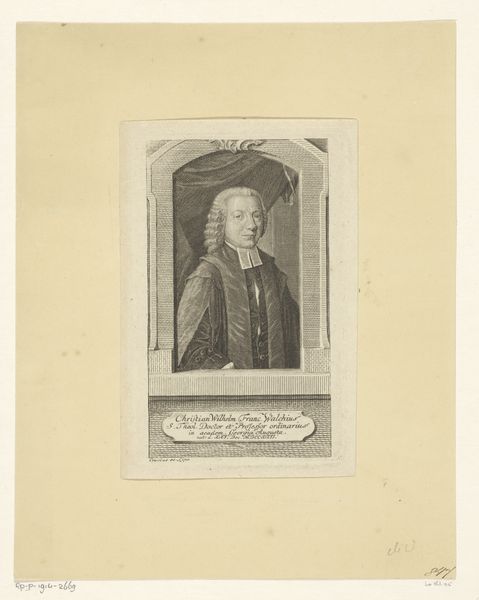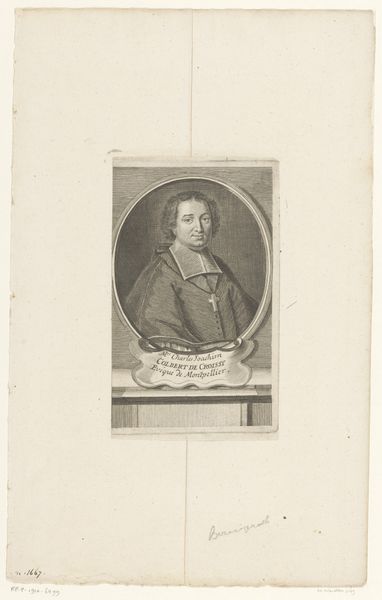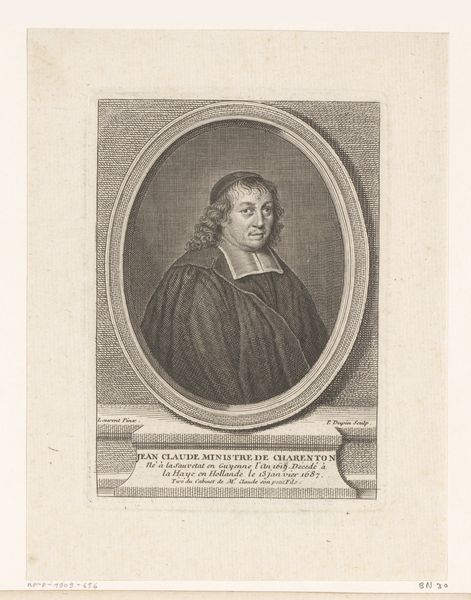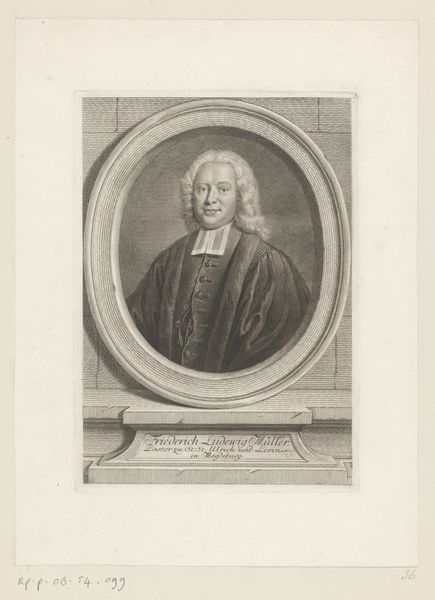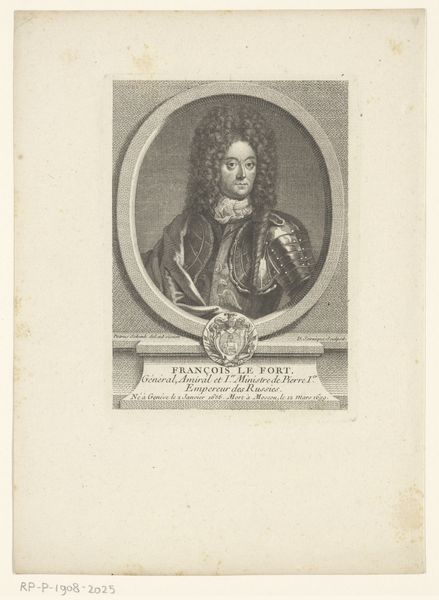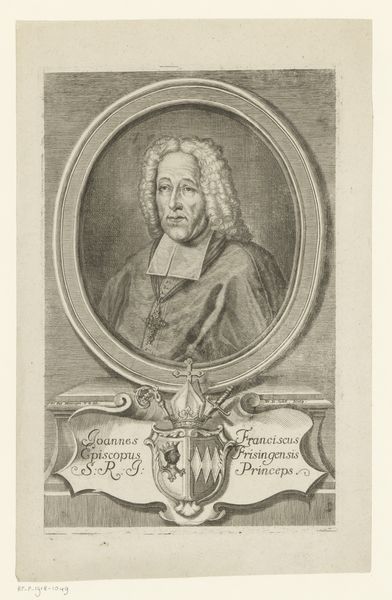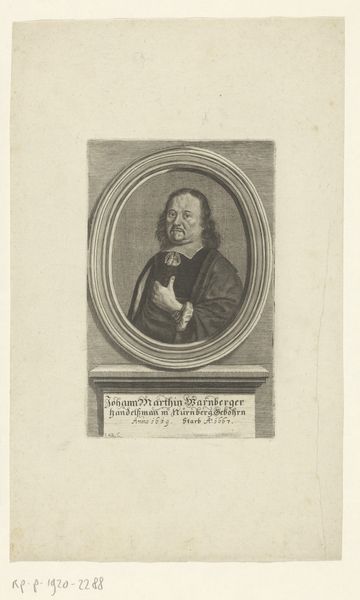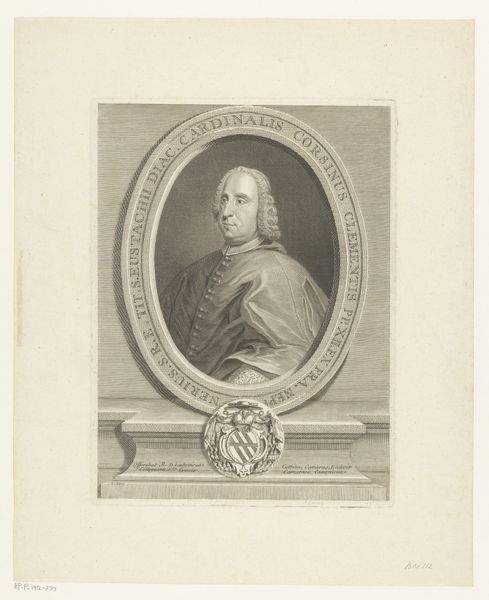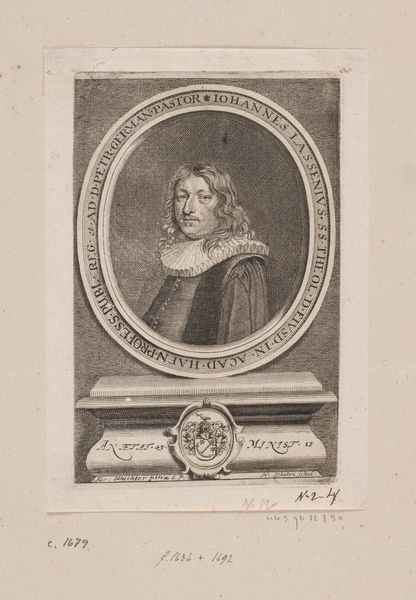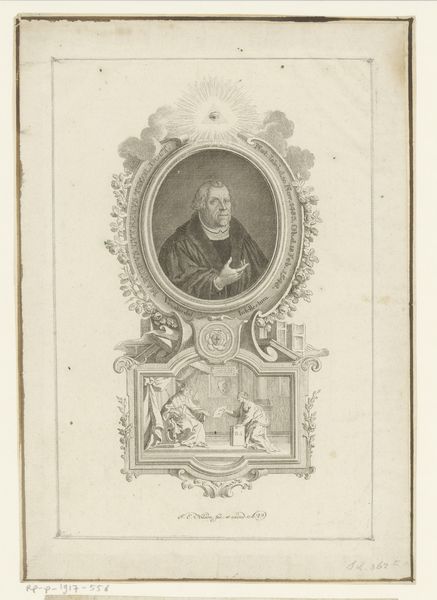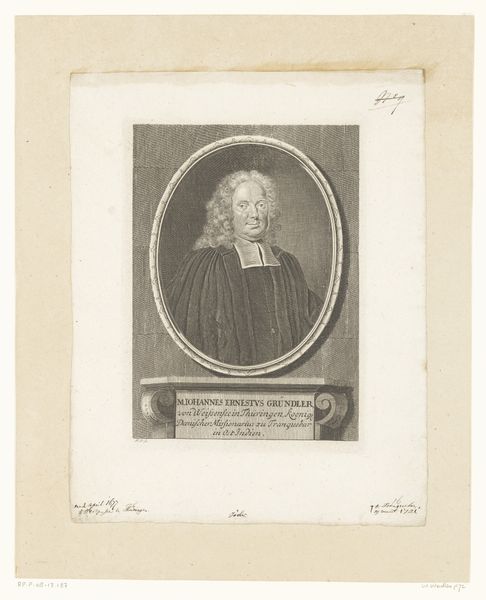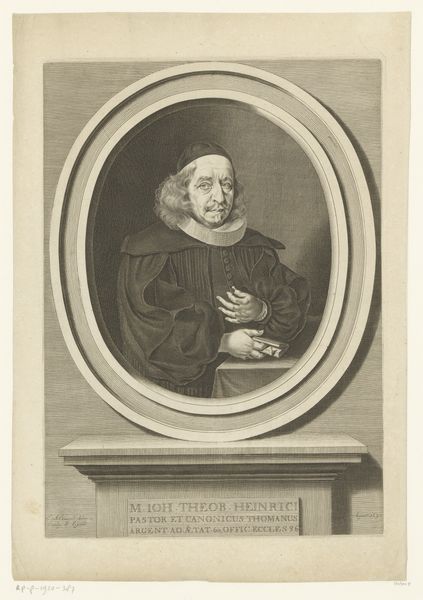
print, engraving
#
portrait
#
baroque
# print
#
engraving
Dimensions: height 142 mm, width 89 mm
Copyright: Rijks Museum: Open Domain
Curator: Let’s take a look at this engraving. It's a portrait of John Pordage, made sometime between 1701 and 1763 by Johann Benjamin Brühl. You can find it here at the Rijksmuseum. Editor: There's a solemn intensity about it. The tight oval frame and dark robes give a sense of confinement, almost melancholic, yet the flowing hair suggests freedom of expression. Curator: The oval frame within the rectangle—the shapes play with established Baroque conventions. And Pordage’s gaze seems to pierce through those very conventions. It's as if the portrait holds the essence of a deeply spiritual man. I’m fascinated by how Brühl presents Pordage here. Editor: Right, because Pordage wasn’t just any man; he was a controversial Anglican priest with mystical leanings, who was actually expelled from his post. Does this portrait speak to that tension—between conventional societal expectations, symbolized by that constricting frame, and his own beliefs? Curator: Exactly! It hints at that inner struggle. Look closely at the detailing in the drapery. Notice how the shadows accentuate the way it’s pushed to the side. The curtain almost feels like a theatrical reveal of something profound, and maybe, forbidden. Pordage dedicated his life to exploring esoteric theology. His intensity is evident. Editor: His story invites consideration about spiritual dissent in the 18th century, and the way powerful religious institutions try to stamp it out. Even in a portrait—meant to be a mark of prestige, maybe—the resistance glimmers through. Curator: This small engraving isn't just a portrait. It's a testament to how individuals can carry, often etched in their faces, the weight of challenging dominant thought. Editor: Ultimately, I find that it serves as a striking reminder that visual codes carry specific meaning; every aspect can reflect cultural and political contexts, making this far more than simply a visual commemoration.
Comments
No comments
Be the first to comment and join the conversation on the ultimate creative platform.
